Quite a few people have been asking me recently about swimrun wetsuits and which one would be best.
Swim running is a new sport and the kit is evolving year-by-year but there are definitely some key differences between the standard triathlon wetsuit and a swimrun wetsuit, which are important considerations.
Shorty
Most swimrun wetsuits are 'shorties'. As swim running is typically a spring summer autumn sport this is usually enough to keep you warm but if you do tend to feel the cold you may want to consider a model that has full length arms or one with detachable arms.
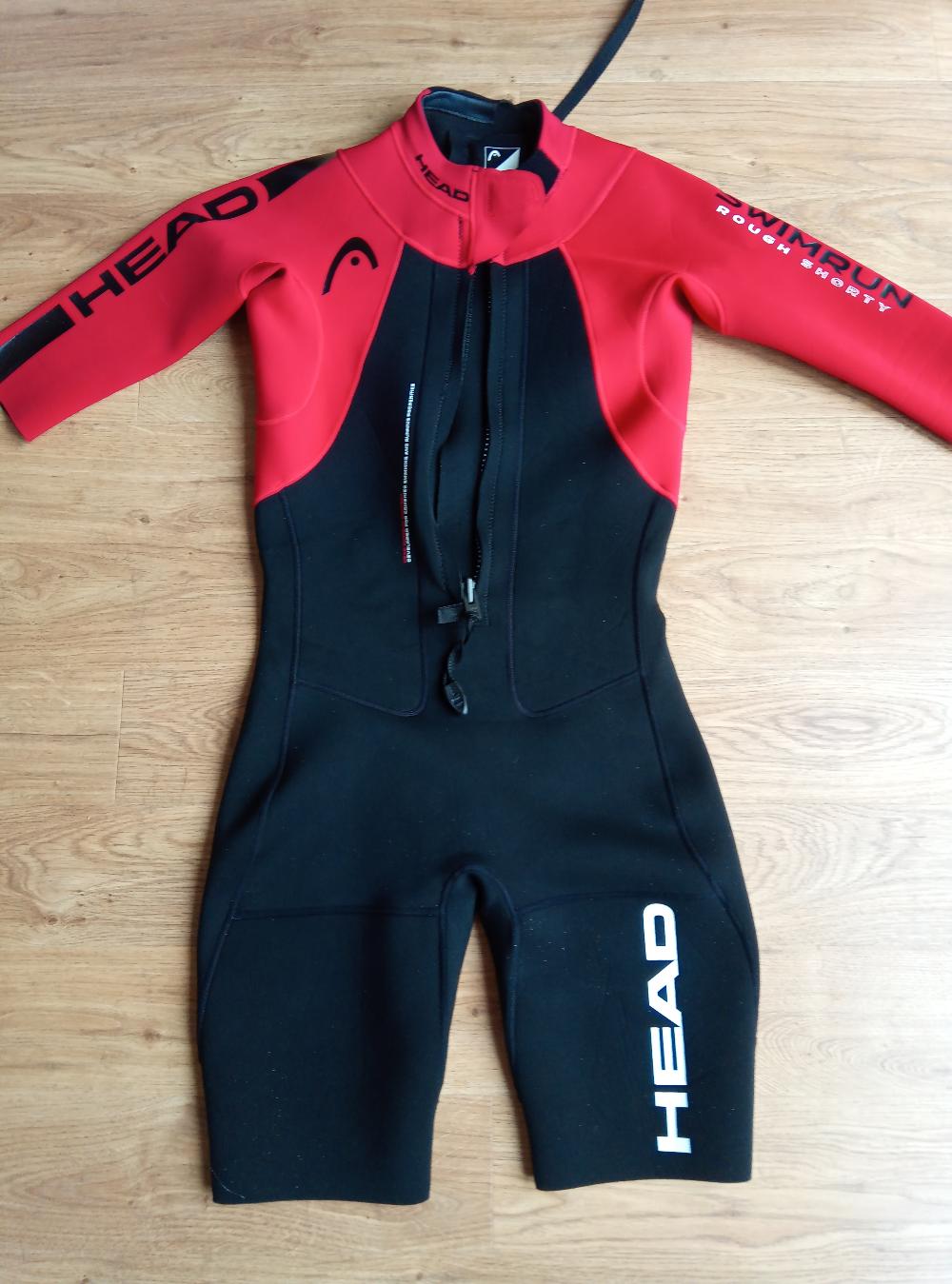
Zips
A swimrun wetsuit typically opens at the front. The zip should be heavy duty and have a velcro flap at the top as with the standard tri wetsuits.
The front fastening zip allows you to undo the zip during the running stage to allow yourself to cool down and helps with chest expansion during the run.
I also find the front opening useful to stuff gear down either side, for example my cap and goggles on one side and foldable water bottle on the other. This keeps all of my gear close at hand and prevents it from rattling around and falling off.
Some swimrun suits come with zips on both front and back sides, for example the Head Swimrun Shorty.
This makes it easy to get the top down for 'decabbing' if you want to do the run with the wetsuit rolled down. Personally I find 'decabbing' an inconvenience because the wetsuit tends to fall down around your ass when you do the run and you need a tight belt to keep it up! Each to their own, but a double sided zipper will allow you to decab by yourself and not waste time/having to rely on your partner to help rolling the suit down and back up at each transition.
I do like the double-sided zip idea though, purely to get the wetsuit off easily at the end!
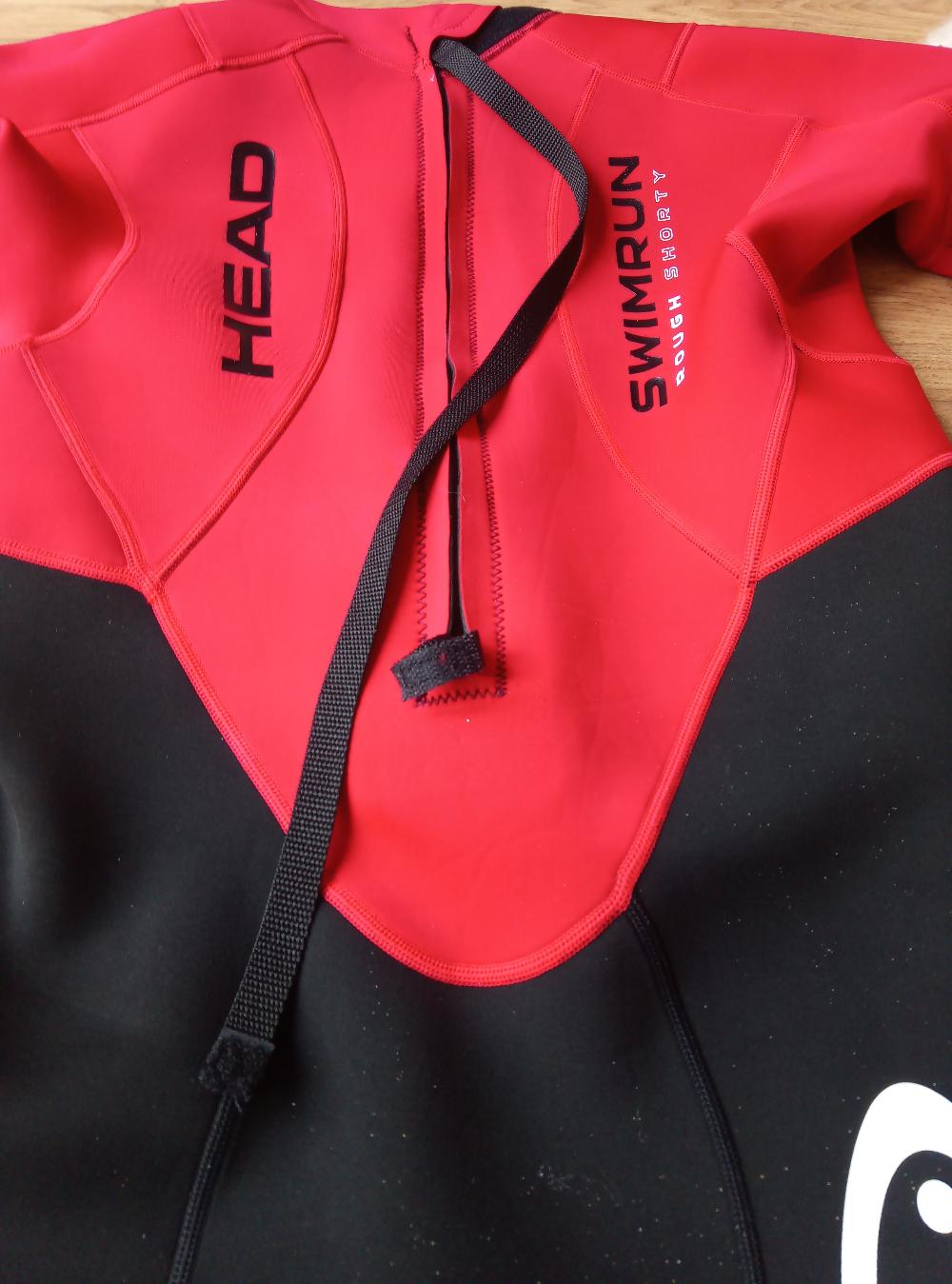
Upper
The upper part of a swimrun wetsuit may or may not be nylon covered neoprene and should be as flexible as the triathlon suits. Typically now they are evolving to be smooth surfaced neoprene, at least on the front panels, to minimise water resistance, but are often nylon covered neoprene on the back and upper arms.
Nylon covered neoprene will allow you to sweat and is definitely tougher, which is an important consideration given swimrun routes are normally through rough terrain.
Arms
Swimrun wetsuits are normally shorty style wet suits with short arms and some models come with detachable full arm sets which you can add or remove based on the water and air temperature, Eg. Zone 3's Versa. See a review here.
I have found this to be very useful and it does allow you to do swimrun training year round.
.jpg)
Hips and Legs
The hips on a swimrun wetsuit are wider which allows greater mobility of the hip flexor muscles when scrambling in and out of water and running long distances.
The trend now is for the legs to be shorty style length, however some models do have slightly extended length on the legs such as the Zone 3 Versa.
One thing I would consider as essential on a swimrun wetsuit is for the legs to be nylon coated as opposed to smooth neoprene.
As you can see from the Zone 3 Versa review the smooth neoprene legs rubbed through on my inner thighs within a short time and the legs of any swimrun suit take a real bashing on rocks, thorns, brambles and so on. Smooth neoprene just get shredded whereas nylon coated neoprene is far tougher and is abrasion resistant.
Pockets
A lot of wetsuit manufacturers market inside pockets as a great feature but in my experience they are useless! When the wetsuit is on, the snug fit means it is near impossible to get anything in or out of the pockets, let alone when running.
In my opinion the best pocket design are the ones on the outside of the wetsuit. The Zone 3 Versa has a single pocket in the small of the back which can be open and closed with a tough zip, which importantly fastens shut with downwards, which means it does not open when you start swimming.
The Colting Swimrun Go wetsuit for example, also has two outside zip pockets in the kidney areas of the back of the wetsuit.
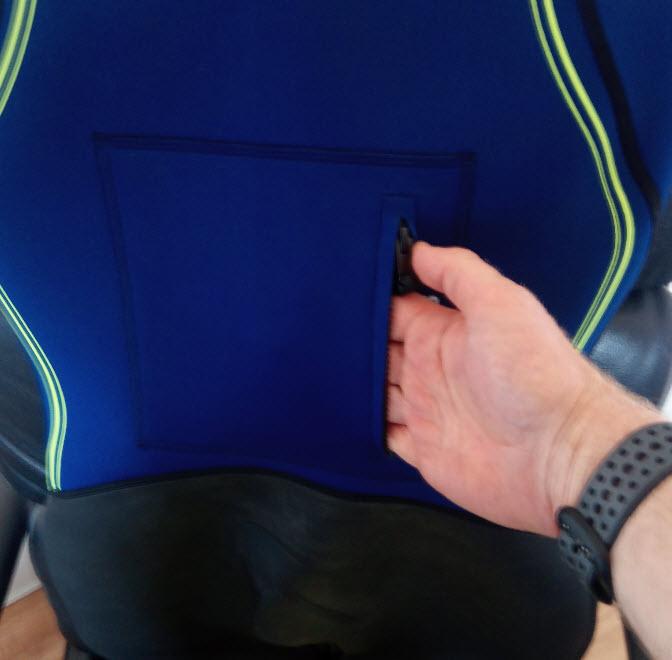
Hoops and Attachment Points
The latest swimrun wetsuits come with small nylon hoops at strategic places on the wetsuit, for those who want to use a tether line with their swimrun partner.
If like me you don't use a tether line another option could be to attach a small clip to one of the loops and use that to attach your hand paddles to whilst running.
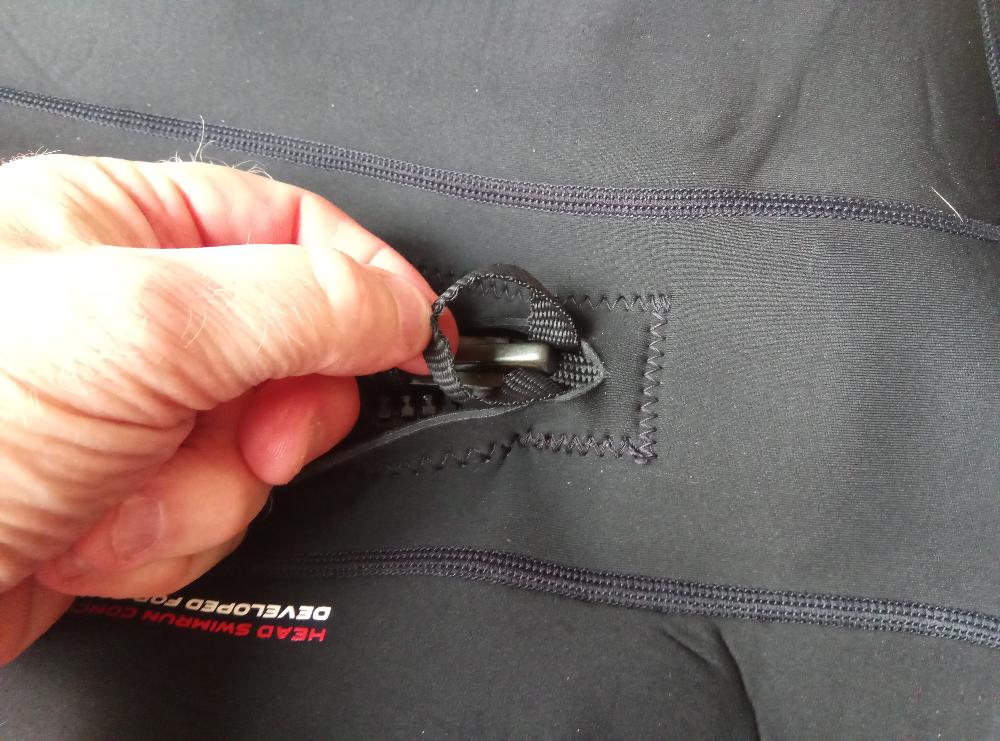
Whistle
Many of the new swimrun wetsuits come with the mandatory whistle in the front zipper lanyard. this is a really good idea because it means there's one less piece of detachable kit to worry about, especially important because you can be disqualified for unknowingly dropping kit along the course.
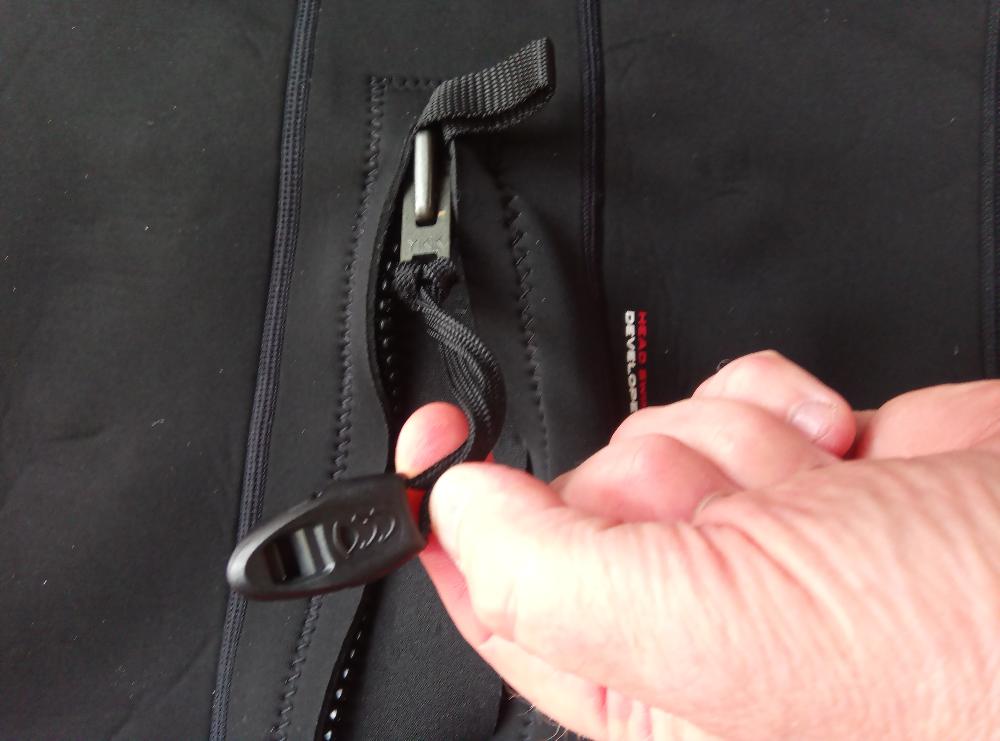
Conclusion
Swimrunning is on the rise and has great appeal for both competitive swimrunners and those who just like to get outdoors and experience the elements.
The latest wave of swimrun wetsuits do have some great features, but there is no need to rush out and buy the best model - try it first with a standard shorty wetsuit, or even a cut down triathlon wetsuit, and see if you like it.
Then match the features you think would be important to you, along with your budget, and hopefully you will end up with the best suit for your needs.
Swimrunning involves a lot of experimentation - what works for one person may not work for you - try different things and don't be afraid to do some clever hacks or even make your own kit.
Try with an entry level suit first like the ones mentioned here which are excellent value for money; then upgrade after a year or two.
A decent, well thought out wetsuit with loads of features helps of course, but is not the be all and end all and should be seen as an investment only once you're sure swimrunning is for you.
